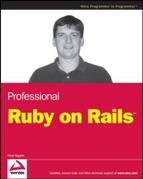Chapter 9. Talking to the Web
Increasingly, the content produced by web applications and distributed over web servers is aimed not directly at the user, but at other computer programs that use the data in different ways. Applications can take web data and present it to the user in a different user interface (UI) — such as the Twitteriffic application, which gives Twitter a Mac OS X front-end. Or a site can aggregate data from multiple sites — such as Bloglines or Google Reader.
All it really means to be a web service is to output data from HTTP requests in a machine-readable format. At the moment, XML is the most common format (especially because the RSS format for blog syndication is just a specification within XML). In fact, the formal definition of web services seems to sort of absurdly say that a web service can only be in XML. However, you'll frequently see JavaScript Object Notation (JSON) used (especially for data specifically earmarked for Ajax and JavaScript), and most web pages still render HTML, so it's useful to have a tool that can extract useful data from those pages as well.
There have been a few attempts to standardize web services. These days, the most prominent standards are SOAP (which is currently an ex-acronym because the original acronym was officially declared misleading) and REST (REpresentational State Transfer), which has already cropped up numerous times in this book. Without getting into the detailed arguments over which standard is better, the Rails core team has chosen REST as a preferred mechanism for managing web services from Rails. As a result, this chapter focuses on REST and similar lightweight web communication systems such as RSS and Atom. It also tackles producing web service data and consuming web services.
